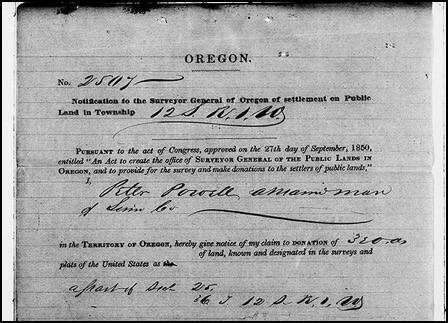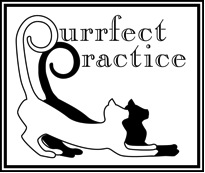Culture
Christmas Eve Traditions
24/12/24 10:03
We will open presents usually as a family on Christmas Eve. This has been the tradition for my family and Bob's too from our early childhood. We have added going out to dinner on Christmas Eve as a tradition when the boys were young and have tried to carry it forward. Harder to do when we first moved back to Oregon though more restaurants are open on the Eve.
Here is an article and information about how the Swedes have a tradition of watching Donald Duck cartoons on Christmas Eve…
"Disney devotees may be familiar with the 1958 Donald Duck Christmas special From All of Us to All of You, but they probably haven’t seen it as many times as the average Swede. The special first aired in Sweden at 3 p.m. on December 24, 1959, and celebrating Christmas Eve with the temperamental waterfowl quickly became one of the country’s signature holiday traditions. Known in Sweden as Kalle Anka och hans vänner önskar God Jul (which translates to Donald Duck and His Friends Wish You a Merry Christmas), the special airs on SVT1, the main public television channel, and is presented by a host playing Walt Disney. It’s also slightly different each year, as a contractual obligation requires SVT1 to include a snippet from the Mouse House’s latest film.
If you’re wondering how Kalle Anka became so popular in the first place, it’s partially explained by the fact that Sweden had only two TV channels at the time, and Christmas was the only time Swedes could get a dose of Disney. Traditions have a way of sticking, and Kalle Anka is frequently the most-watched program of the year — 40% of the country tunes in during an average year, and in 1997 more than half the population did."
Here is an article and information about how the Swedes have a tradition of watching Donald Duck cartoons on Christmas Eve…
"Disney devotees may be familiar with the 1958 Donald Duck Christmas special From All of Us to All of You, but they probably haven’t seen it as many times as the average Swede. The special first aired in Sweden at 3 p.m. on December 24, 1959, and celebrating Christmas Eve with the temperamental waterfowl quickly became one of the country’s signature holiday traditions. Known in Sweden as Kalle Anka och hans vänner önskar God Jul (which translates to Donald Duck and His Friends Wish You a Merry Christmas), the special airs on SVT1, the main public television channel, and is presented by a host playing Walt Disney. It’s also slightly different each year, as a contractual obligation requires SVT1 to include a snippet from the Mouse House’s latest film.
If you’re wondering how Kalle Anka became so popular in the first place, it’s partially explained by the fact that Sweden had only two TV channels at the time, and Christmas was the only time Swedes could get a dose of Disney. Traditions have a way of sticking, and Kalle Anka is frequently the most-watched program of the year — 40% of the country tunes in during an average year, and in 1997 more than half the population did."
Comments
Where Some Words Came From
19/12/24 11:06
I have long been a fan of Charles Dickens as an author. I have many of his books.
A recent article covers where some of our words in the English or American vocabulary came from.
One condition that I can find myself feeling is boredom, especially at this winter time of the year and there is less sunshine. The background on Charles Dickens bringing this word to more common usage was in his novel, Bleak House.
"According to the Oxford English Dictionary, the first written record of the word "boredom" appears in Charles Dickens' 1852 novel Bleak House.
However, some historians have found antecedents that predate Dickens use of the term. Lord Byron used "bores" and "bored" in his 1823 epic poem Don Juan. And a few years later, Herman Melville used other variations of the term, like "bore" and "bored to death". While we can’t be sure who wrote the word first, its literary origin is undeniable."
A recent article covers where some of our words in the English or American vocabulary came from.
One condition that I can find myself feeling is boredom, especially at this winter time of the year and there is less sunshine. The background on Charles Dickens bringing this word to more common usage was in his novel, Bleak House.
"According to the Oxford English Dictionary, the first written record of the word "boredom" appears in Charles Dickens' 1852 novel Bleak House.
However, some historians have found antecedents that predate Dickens use of the term. Lord Byron used "bores" and "bored" in his 1823 epic poem Don Juan. And a few years later, Herman Melville used other variations of the term, like "bore" and "bored to death". While we can’t be sure who wrote the word first, its literary origin is undeniable."
Advent Calendar in Paris
03/12/24 14:01
Each holiday year, we get a Jacquie Lawson Holiday Advent Calendar to do an event or enjoy music and colorful drawn video. This year we meet in a parlor in Paris. The girls and I have decorated the Christmas tree. We need to change the parlor look at some point. They enjoy seeing what each day brings to us. I get their input which engages them considerably. School has interrupted the start so we will need to manage how to handle each day. An example of our decorated tree is included here.


Vigelund Park Oslo
04/08/24 09:45
Whenever we went to Oslo in past years, we would look to visit the Vigelund Park museum of outdoor statues with gardens. It is unique and a bit shocking in its way. We visited with both boys in 1993.
Some details from an article on unusual museums:
One of the more bizarre museums of the world, the Vigeland Sculpture Park is an open-air park home to more than 200 sculptures by Gustav Vigeland. It's one of Oslo's most-visited tourist destinations, and it's not difficult to understand why. The collection of bizarre statues includes naked human sculptures cast in bronze, iron and stone, and while some are depicted in traditional poses, there are quite a few engaged in weird scenarios, like hugging giant lizards and fighting flying babies. If the weather is sunny, make your way to this park to see humanity portrayed at its strangest.

Some details from an article on unusual museums:
One of the more bizarre museums of the world, the Vigeland Sculpture Park is an open-air park home to more than 200 sculptures by Gustav Vigeland. It's one of Oslo's most-visited tourist destinations, and it's not difficult to understand why. The collection of bizarre statues includes naked human sculptures cast in bronze, iron and stone, and while some are depicted in traditional poses, there are quite a few engaged in weird scenarios, like hugging giant lizards and fighting flying babies. If the weather is sunny, make your way to this park to see humanity portrayed at its strangest.

Ben Hur-One of My Favorites
31/03/24 10:19
Ben Hur has long been one of my favorite movies since a child. It helped turn me into a Charlton Heston fan as an actor and speaker. The chariot race scene in the 1950s movie version is probably one of the best if not the best action cinemaphotography scenes in a movie.
The movie was made from a book published in 1880 by General Lew Wallace.
From a well-written article about the back story on Ben Hur and appropriate for this Easter Day, March 31, 2024.
In the American Masters documentary Directed by William Wyler (1986), Charlton Heston tells the kind of story that gives actors night terrors. He is starring in the title role of MGM’s $15 million epic Ben-Hur. The dailies are coming back and director William Wyler is not happy. Heston can take criticism, he can work with a director, he appreciates guidance. What do you need? he asks.
“Better,” snaps Wyler.
Heston got better of course. Ben-Hur went on to win 11 Academy Awards, save MGM from insolvency, and imprint itself on the popular imagination.
The movie was made from a book published in 1880 by General Lew Wallace.
From a well-written article about the back story on Ben Hur and appropriate for this Easter Day, March 31, 2024.
In the American Masters documentary Directed by William Wyler (1986), Charlton Heston tells the kind of story that gives actors night terrors. He is starring in the title role of MGM’s $15 million epic Ben-Hur. The dailies are coming back and director William Wyler is not happy. Heston can take criticism, he can work with a director, he appreciates guidance. What do you need? he asks.
“Better,” snaps Wyler.
Heston got better of course. Ben-Hur went on to win 11 Academy Awards, save MGM from insolvency, and imprint itself on the popular imagination.
Worm Moon
18/03/24 08:22
Where did the name for the first full moon of spring come from?
Worm Moon - which is present on March 25, just before the big eclipse is present moving from the southwest across the Mid-West to the northeast.
What is a worm moon?
Earthworms might have been on the minds of the Colonial settlers or Native American tribesmen who bequeathed the entire calendar month (not just the full moon itself) this name. But another form of grub (not earthworms) may actually be the true originator of the moniker Full Worm Moon.
It was actually beetles, according to the Farmer’s Almanac. The story goes, in the 1760s, the Colonial explorer from Massachusetts Captain Jonathan Carver met with the Naudowessie (Dakota) and other Native American tribes. He wrote that the name “Worm Moon” originated from beetle larvae which begin to emerge from the bark of thawing trees and other winter hideouts this time of year.
Worm Moon - which is present on March 25, just before the big eclipse is present moving from the southwest across the Mid-West to the northeast.
What is a worm moon?
Earthworms might have been on the minds of the Colonial settlers or Native American tribesmen who bequeathed the entire calendar month (not just the full moon itself) this name. But another form of grub (not earthworms) may actually be the true originator of the moniker Full Worm Moon.
It was actually beetles, according to the Farmer’s Almanac. The story goes, in the 1760s, the Colonial explorer from Massachusetts Captain Jonathan Carver met with the Naudowessie (Dakota) and other Native American tribes. He wrote that the name “Worm Moon” originated from beetle larvae which begin to emerge from the bark of thawing trees and other winter hideouts this time of year.
Snow Moon February 24
11/02/24 14:17
The full moon for February will fall on February 24th, early in the morning. The February full moon is called the Snow Moon. Why?
Native Americans in South Dakota called the moon as such since February would often get more snow than other winter months.
Also, Eleven months in the calendar year have at least one full moon—and sometimes even two—occurring in the same month. February is the one oddball exception to that rule. For as we know, it’s the shortest month of the year and, even more oddly, sports an extra day on leap years.Thus, very rarely, just once every 19 years, there will be no full moons in February. One will appear right before and one right after, but the full moon will slip right by February itself, continuing along its tour of the calendar year like nothing happened. This happenstance is what’s called a “dark moon.” The last dark moon was in February 2018. We will not see another until 2037.
Native Americans in South Dakota called the moon as such since February would often get more snow than other winter months.
Also, Eleven months in the calendar year have at least one full moon—and sometimes even two—occurring in the same month. February is the one oddball exception to that rule. For as we know, it’s the shortest month of the year and, even more oddly, sports an extra day on leap years.Thus, very rarely, just once every 19 years, there will be no full moons in February. One will appear right before and one right after, but the full moon will slip right by February itself, continuing along its tour of the calendar year like nothing happened. This happenstance is what’s called a “dark moon.” The last dark moon was in February 2018. We will not see another until 2037.
Napolean Dynamite Redux
27/01/24 07:41
It is interesting to live in a household where it is a majority of men - husband and 2 sons - who love to quote lines from favorite movies. One of the top movie favorites for them has been Napoleon Dynamite. They love the humor and often quote lines or scenes from it. I think in many ways it is a "guys" movie though I have run into women who like it too.
So it was with fascination that I came across this article related to the 20 year anniversary of the movie and where and how it got made. It took just $200,000, a town like Preston, ID, and shown at the Sundance Utah film festival. I will include the link to the Deseret Times article and hope that one can access this without a subscription. Read and enjoy!
<
So, how does it hold up 20 years later?>>
So it was with fascination that I came across this article related to the 20 year anniversary of the movie and where and how it got made. It took just $200,000, a town like Preston, ID, and shown at the Sundance Utah film festival. I will include the link to the Deseret Times article and hope that one can access this without a subscription. Read and enjoy!
<
So, how does it hold up 20 years later?>>
Get Your Barbecue
15/08/23 08:44
Check out this Guide to Barbecue in different regions of the United States. These types can be quite different and distinctly wonderful to eat.
Barbecue is one of America’s most beloved — and debated — culinary traditions. From the Carolinas to Hawaii, each region of the U.S. has their own take on barbecue, from the smoking process to the sauces and sides. And each region will probably tell you theirs is the best. Wondering what all the fuss is about? Here are four of the most popular regional barbecue styles in the U.S., explained.
More info:
Texas
The Carolinas
Hawaii
Missouri
Barbecue is one of America’s most beloved — and debated — culinary traditions. From the Carolinas to Hawaii, each region of the U.S. has their own take on barbecue, from the smoking process to the sauces and sides. And each region will probably tell you theirs is the best. Wondering what all the fuss is about? Here are four of the most popular regional barbecue styles in the U.S., explained.
More info:
Texas
The Carolinas
Hawaii
Missouri
Cajun or Creole
02/08/23 19:12
If you go to New Orleans for Mardi Gras or other reasons, or spend some time in Louisiana you will hear the terms Cajun or Creole. What is the difference?
The French founded New Orleans in 1718, naming it for the Duke of Orleans. At that time, the term “Creole” referred to non-Indigenous people born in colonized countries of the Americas. This was the era of enslavement, so early on, the term was exclusively for white people. In New Orleans, that meant the children of the white French ruling class.
While “Creole” is geographically associated with “Cajun,” they are not the same. Everywhere around Louisiana, you’ll also hear about Cajun food and music, but this word derives from les Acadiens, the name for the French-speaking people who lived along the eastern coast of Canada, then a French colony. However, when the British conquered Acadia in the 1700s, renaming it Nova Scotia and New Brunswick, the French (les Acadiens) were pushed out.
Some of les Acadiens went back to France, and others went to the French Caribbean. But the Spanish, who had just acquired French-speaking Louisiana, sent emissaries inviting them to come to Louisiana and help fend off the rival British colonists.
The new arrivals didn’t have the means to join the established class of French in New Orleans or the plantation owners. They mixed with the Indigenous people and free Blacks and spread throughout the south, mainly near water, in swamplands, along levees and bayous, and on the coastal marshes.
Les Acadiens turned into “Cajuns,” and these people settled largely in rural areas and retained a distinct culture from the New Orleans-based Creoles. Food is, naturally, a major distinguishing factor in any culture. Two simple ways to distinguish between a Cajun and Creole dish: Cajuns rarely use tomatoes and their food is spicier. A Cajun jambalaya, the Louisiana version of paella, is brown, not red, like the Creole style. Many Cajuns still speak a nonstandard form of French, but it is different from Louisiana Creole.
The French founded New Orleans in 1718, naming it for the Duke of Orleans. At that time, the term “Creole” referred to non-Indigenous people born in colonized countries of the Americas. This was the era of enslavement, so early on, the term was exclusively for white people. In New Orleans, that meant the children of the white French ruling class.
While “Creole” is geographically associated with “Cajun,” they are not the same. Everywhere around Louisiana, you’ll also hear about Cajun food and music, but this word derives from les Acadiens, the name for the French-speaking people who lived along the eastern coast of Canada, then a French colony. However, when the British conquered Acadia in the 1700s, renaming it Nova Scotia and New Brunswick, the French (les Acadiens) were pushed out.
Some of les Acadiens went back to France, and others went to the French Caribbean. But the Spanish, who had just acquired French-speaking Louisiana, sent emissaries inviting them to come to Louisiana and help fend off the rival British colonists.
The new arrivals didn’t have the means to join the established class of French in New Orleans or the plantation owners. They mixed with the Indigenous people and free Blacks and spread throughout the south, mainly near water, in swamplands, along levees and bayous, and on the coastal marshes.
Les Acadiens turned into “Cajuns,” and these people settled largely in rural areas and retained a distinct culture from the New Orleans-based Creoles. Food is, naturally, a major distinguishing factor in any culture. Two simple ways to distinguish between a Cajun and Creole dish: Cajuns rarely use tomatoes and their food is spicier. A Cajun jambalaya, the Louisiana version of paella, is brown, not red, like the Creole style. Many Cajuns still speak a nonstandard form of French, but it is different from Louisiana Creole.
Judy Garland and an Oscar
11/07/23 14:57
The following information comes from a site that sends emails on Interesting Facts. This one includes information about Judy Garland and her most famous role as Dorothy in the Wizard of Oz which earned her a small Oscar since she was considered then a child star.
<< While she was nominated a few times, Garland’s only Academy Award came in 1940, and it was actually a miniature version of the iconic statuette. Garland was one of just a handful of people to win the special award known as the “Juvenile Oscar,” first awarded to six-year-old Shirley Temple in 1935.
The award typically celebrated a young actor’s achievement in the previous year, and in 1939 Garland had starred in two films: Babes in Arms and The Wizard of Oz. At the time she accepted the award, presented by her former classmate and previous Juvenile Oscar recipient Mickey Rooney, she was just a few months shy of her 18th birthday. The award really does look tiny with a teenager holding it — and even tinier next to full-size Academy Awards, like the one her daughter Liza Minnelli won for Cabaret in 1973.
The Juvenile Oscar wasn’t awarded every year, so it took a special situation to warrant the special trophy. Just 12 were awarded in the 26 years it existed; the last one was awarded in 1961 to Hayley Mills, who appeared in Pollyanna the year before. A 16-year-old Patty Duke won a regular Best Supporting Actress award two years later.>>
<< While she was nominated a few times, Garland’s only Academy Award came in 1940, and it was actually a miniature version of the iconic statuette. Garland was one of just a handful of people to win the special award known as the “Juvenile Oscar,” first awarded to six-year-old Shirley Temple in 1935.
The award typically celebrated a young actor’s achievement in the previous year, and in 1939 Garland had starred in two films: Babes in Arms and The Wizard of Oz. At the time she accepted the award, presented by her former classmate and previous Juvenile Oscar recipient Mickey Rooney, she was just a few months shy of her 18th birthday. The award really does look tiny with a teenager holding it — and even tinier next to full-size Academy Awards, like the one her daughter Liza Minnelli won for Cabaret in 1973.
The Juvenile Oscar wasn’t awarded every year, so it took a special situation to warrant the special trophy. Just 12 were awarded in the 26 years it existed; the last one was awarded in 1961 to Hayley Mills, who appeared in Pollyanna the year before. A 16-year-old Patty Duke won a regular Best Supporting Actress award two years later.>>
Why Has Handwriting Disappeared
22/03/23 14:05
I have been researching the deeds for our property over 170 years and 5 generations. First one needs to go to the tax office at the County Courthouse for a description. Then you take this document to the County Clerk's office to go through the Deed Books and microfiche over the years based on looking for the Direct (grantor) or Indirect (grantee) party involved. There are probably over 50 large books with lined pages covering each deed transaction written in the most clear yet distinctly beautiful cursive handwriting. This form of writing is not seen often today. Many cannot write in script at all. What a potentially lost art. Maybe it is coming back?
A history of what has happened to cursive handwriting with the use of technology such as tablets and computers.
Good penmanship was long considered a status symbol, in that it meant one had the wealth, privilege, and time to access education. The ancient Romans borrowed aspects of the Etruscan alphabet to create one of the earliest forms of written script for transactions and correspondence. In the late eighth century, Charlemagne instructed an English monk to standardize the craft of penmanship, which resulted in Carolingian minuscule, a form of writing that crept closer to modern script. A heavier typeface reigned supreme upon the invention of the printing press in the mid-15th century, but Italian humanists revolted by creating an even more elegant handwriting style, known as “italic.” This became such a status symbol that, by the 1700s, some writing schools emerged in the American Colonies. At Boston schools such as the Latin School and the Writing School in Queen Street — where subjects included spelling, reading, writing, arithmetic, and the catechism — there was a heavy focus on penmanship and different forms of ornamental script and calligraphy.

Script on Peter Powell Donation Land Claim document
A history of what has happened to cursive handwriting with the use of technology such as tablets and computers.
Good penmanship was long considered a status symbol, in that it meant one had the wealth, privilege, and time to access education. The ancient Romans borrowed aspects of the Etruscan alphabet to create one of the earliest forms of written script for transactions and correspondence. In the late eighth century, Charlemagne instructed an English monk to standardize the craft of penmanship, which resulted in Carolingian minuscule, a form of writing that crept closer to modern script. A heavier typeface reigned supreme upon the invention of the printing press in the mid-15th century, but Italian humanists revolted by creating an even more elegant handwriting style, known as “italic.” This became such a status symbol that, by the 1700s, some writing schools emerged in the American Colonies. At Boston schools such as the Latin School and the Writing School in Queen Street — where subjects included spelling, reading, writing, arithmetic, and the catechism — there was a heavy focus on penmanship and different forms of ornamental script and calligraphy.

Script on Peter Powell Donation Land Claim document

